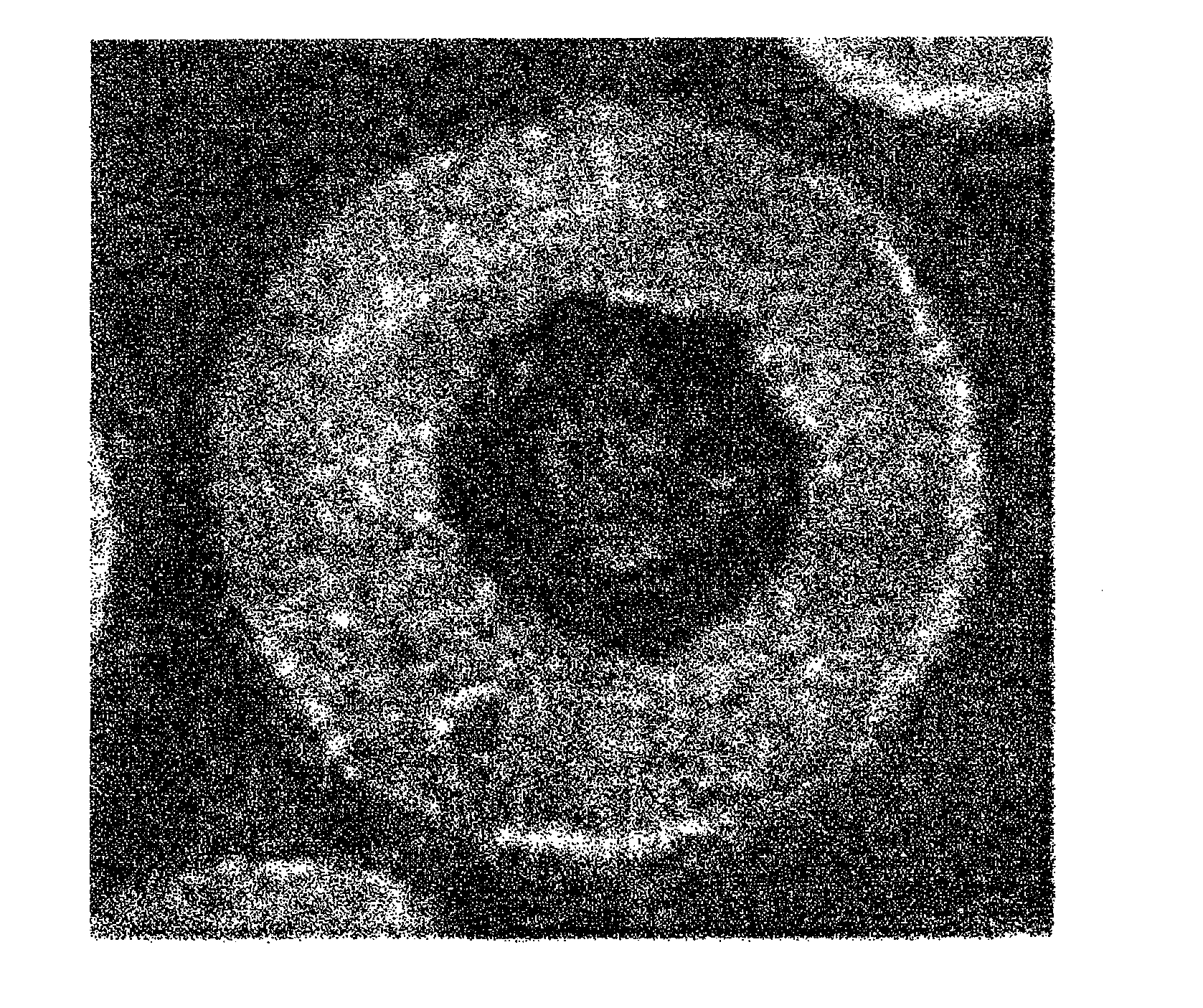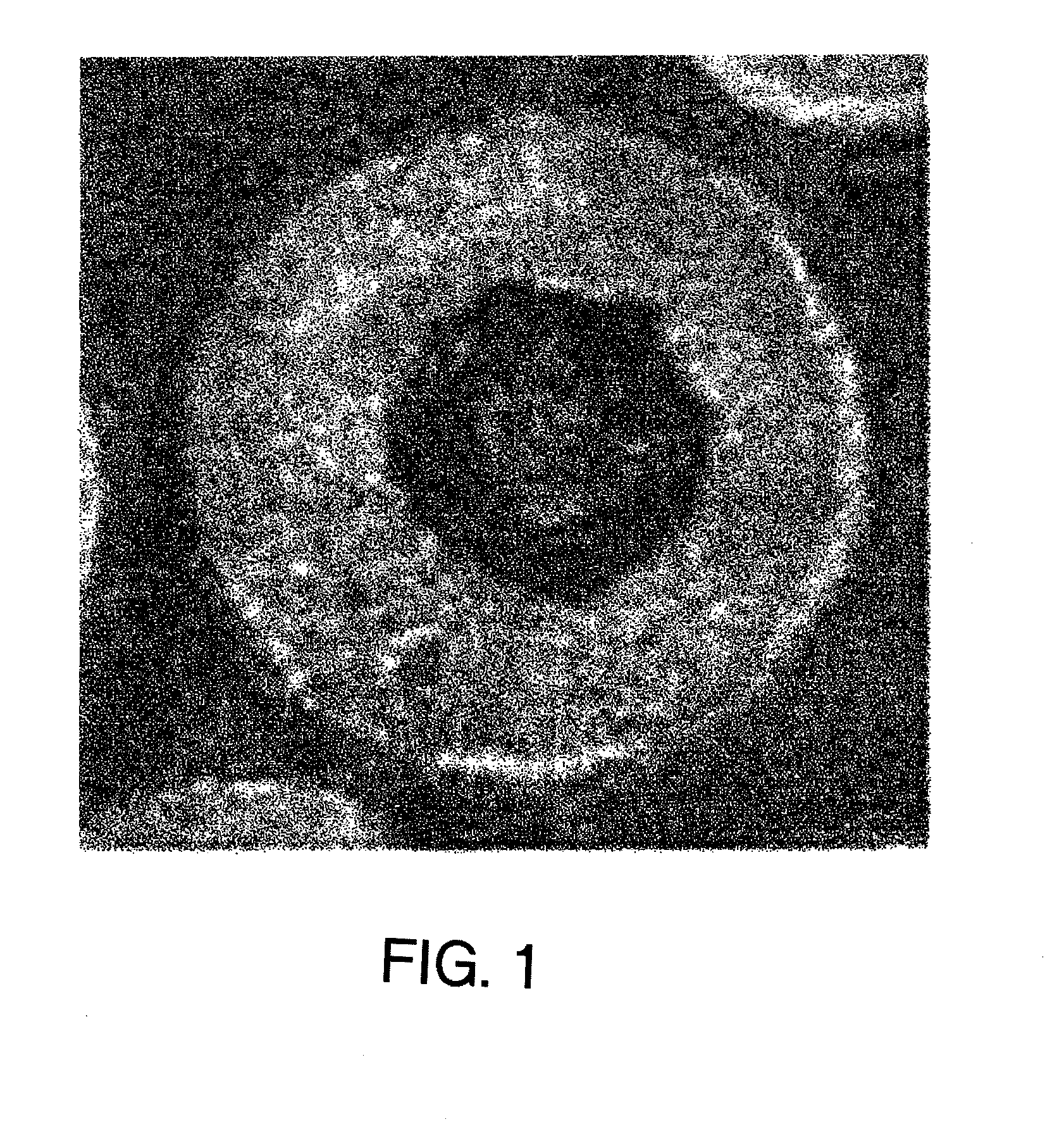Core material of carrier for electrophotographic developer and method for manufacturing the core material, carrier and method for manufacturing the carrier, and electrophotographic developer using the carrier
- Summary
- Abstract
- Description
- Claims
- Application Information
AI Technical Summary
Benefits of technology
Problems solved by technology
Method used
Image
Examples
example 1
[0114]FeOOH was used as a raw material of a carrier core material; water, a binder component and a dispersant were added thereto such that the solid content became 50%; and the mixture was pulverized for 2 hours by a bead mill, and thereafter granulated by a spray drier. The binder used was PVA, and a 10%-PVA aqueous solution was added such that PVA became 1.0% by weight of the whole solid content. The obtained granulated material was passed at a feed rate of 40 kg / hr through a flame to which propane at 5 Nm3 / hr and oxygen at 25 Nm3 / hr were fed, to obtain a regularly sintered material. The obtained sintered material was classified and magnetically sorted to obtain a carrier core material having an average particle diameter of 38.23 μm and containing hollow particles. The feeding of the granulated material to the flame was carried out by an air flow conveyance using nitrogen gas, and the feeding rate of the nitrogen gas flow was set at 11.5 Nm3 / hr.
example 2
[0115]A carrier core material having an average particle diameter of 37.61 μm and containing hollow particles was obtained by the same manner as in Example 1, except that FeOOH and TiO2 as raw materials of the carrier core material were weighed in a molar ratio of 2 moles and 1 mole, respectively.
example 3
[0116]A carrier core material having an average particle diameter of 38.45 μm and containing hollow particles was obtained by the same manner as in Example 1, except that FeOOH, Mg(OH)2 and TiO2 as raw materials of the carrier core material were weighed in a molar ratio of 16.5 moles, 3.5 moles and 2.5 moles, respectively.
PUM
 Login to View More
Login to View More Abstract
Description
Claims
Application Information
 Login to View More
Login to View More - R&D
- Intellectual Property
- Life Sciences
- Materials
- Tech Scout
- Unparalleled Data Quality
- Higher Quality Content
- 60% Fewer Hallucinations
Browse by: Latest US Patents, China's latest patents, Technical Efficacy Thesaurus, Application Domain, Technology Topic, Popular Technical Reports.
© 2025 PatSnap. All rights reserved.Legal|Privacy policy|Modern Slavery Act Transparency Statement|Sitemap|About US| Contact US: help@patsnap.com


